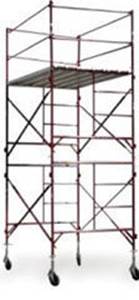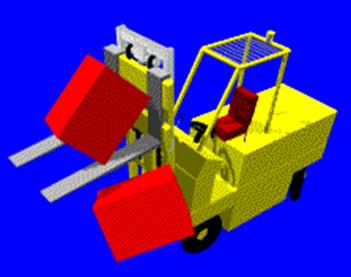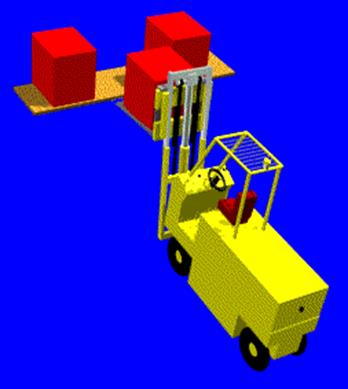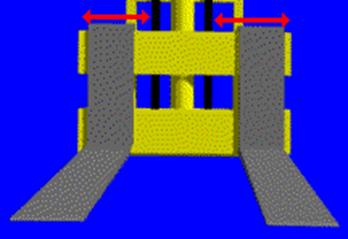Safety Program:
Employee is to print and sign the following document upon
having read this Handbook.
![]()
General Statement of Safety Policy:
SOLANO’S INC. and its management team
have a responsibility to provide all reasonable safeguards for
employee health and safety in compliance with Federal and State
laws/regulations. We also have a responsibility to direct and
insure that employees perform their assigned tasks in a safe working
manner. Most of all, we have a responsibility to develop a
safety awareness in our staff.
Providing a safe and healthy work
environment is a business objective as well as a moral one.
Injury and illness represent lower productivity, staffing issues,
higher insurance costs, potential fines and litigation. An
accident free workplace is good for business as well as employees.
Our Injury/Illness Prevention Program:
SOLANO’S INC will continue to have an
effective Injury & Illness Prevention Program (IIP). Our
program includes creation of this updated IIP Program manual that
defines our safety program, requirements for training our staff
regarding safety procedures and work rules, scheduled inspections at
each of our facilities with follow-up corrective actions and
procedures for handling jobsite incidents. Details of each of
these elements will be discussed and expanded in following portions
of this manual.
The Injury and Illness Prevention Program
Manual consists of two parts, Part 1 describes the IIP program
policies and procedures and Part 2 provides detail work rules to be
followed to ensure safety in our workplace.
SOLANO’S management encourages all
employees to make suggestions for improvement in our working
environment and will continue to add to or revise this document when
improvements are recognized.
A safe and healthy working environment
requires active participation of the entire staff. For
purposes of this discussion, four discrete levels within the staff
are described and their general duties and responsibilities
identified.
Corporate
Management:
Corporate officers are ultimately responsible for providing a safe
environment for the conduct of the Corporation’s business
activities. The policies and procedures of the corporation
must comply with Federal and State laws and regulations, notably
Cal/OSHA, as to health and safety.
To assist them in their duties, they shall call upon various
corporate functions including Facility Managers, Human Resources,
Controller, Information Technology and an appointed member of the
organization referred to as the Safety Coordinator.
1)
Understanding the corporation’s responsibilities under
applicable Federal and State health and safety laws and regulations.
2)
Implementing an Injury and Illness Prevention program.
3)
Monitoring IIP program compliance.
Facility Management:
Each of SOLANO’S entities has a Facility (Store) Manager.
These individuals are key to the success of our IPP program.
They insure that employees assigned to their facility are performing
their assigned tasks in accordance with the procedures described in
the IIP program documentation.
Facility Management is responsible for:
1)
Assuring that the IIP program is presented to each member of
their staff.
2)
Reviewing actual job performance to assure compliance with the
policies and procedures defined in the IIP program documentation.
3)
Determining possible hazards in their facility and developing
acceptable alternatives to resolve hazard potential.
4)
Preparing documentation required to report accident/exposure
incidents.
5)
Assuring proper training of their staff.
Safety
Coordinator:
The Safety Coordinator has a number of responsibilities to assure
that the corporation’s daily activities are conducted in a safe
workplace environment. This position reports directly to the
CEO.
Safety Coordinator is responsible for:
1)
Awareness of changes in Federal and State workplace safety
regulations.
2)
Preparation of the Injury and Illness Prevention program
document.
3)
With the Facility Managers, perform periodic facility audits
for safety procedure and work rule compliance.
4)
Assist the Facility managers in resolving identified actual or
potential hazardous conditions.
5)
With the Facility Managers, review safety/illness incidents
and assure proper documentation and remedial actions as required.
6)
Providing reporting forms and documentation required as
defined in the IIP Program manual.
7)
Provide training aids, safety posters, documents and
specialist speakers as required.
Other Team
Members:
As stated, safety in the workplace is the
responsibility of all members of the corporation. Your actions
and observations are critical to achieving our goal of having an
accident free workplace environment.
Team Members are responsible for:
1)
Having a clear understanding of the IIP Program content,
procedures and objectives.
2)
Following safety/illness rules as defined in the IIP Program
documentation and/or as directed by their supervision.
3)
Reporting injury/illness incidents immediately to the
applicable Facility Manager or in his absence, the Safety
Coordinator or CEO.
4)
Reporting actual or possible hazardous conditions or behaviors
to their Facility Manager or the Safety Coordinator.
The following figure, IIP-1, illustrates the
significant activities that are involved in our safety program.
Descriptions of select blocks on the figure are provided below.

Program
Objectives:
Our IIP Program must comply with a number of
requirements defined by outside organizations as well as the goals
of SOLANO’S INC. The health and safety of our employees is of
interest to two Occupational Safety and Health Administrations,
Cal/OSHA and Fed/OSHA. These government entities administer
laws and regulations affecting the health and welfare of our
workers. Also, our Workers Compensation Insurance carrier and
State Division of Workers Compensation are involved in industrial
workplace incidents that result in workers claims. Last but
not least, our corporate management desires to provide the staff a
safe and healthy environment.
IIP
Program Manual:
Based on
the objectives and requirements, this Injury and Illness Program
Manual was created by our Safety Coordinator. As indicated on
the figure, modifications and/or enhancements to the manual will be
made as operating experience mandates.
Employee Training:
As shown in Figure IIP-2, employees must review and
study the IIP Program Manual and acknowledge their understanding of
the procedures and work rules that apply to their location and work
assignments. New employees receive an Orientation presentation
from their Facility Manager that includes review of this manual.
See form EO-1, the Orientation Checklist.
Upon completion of becoming familiar with the content of the manual,
each employee shall sign and date the Employee Acknowledgement Form
(EA 1) and return it to the applicable Facility Manager for
forwarding to HR (Pam Hansen). The completed form becomes part
of the employee’s data file.
Facility Managers shall continually review their employee’s
compliance with the published procedures and work rules. If
remedial or changed work rule training is required, the Facility
Manager shall conduct such training with support of the Safety
Coordinator. An attendance log indicating the training
subject, date and names of those employees attending shall be
forwarded by the Facility Manager to HR. Quarterly, Facility
Managers shall schedule a meeting(s) with their staff to review the
work rules applicable to their facility.

Hazards Inspections:
The Facility Manager shall on a daily basis, review his facility
status regarding safety issues and compliance with the published
procedures and work rules. As shown in Figure IIP-3, a monthly
walk through inspection of each facility is to be conducted by the
Facility Managers and the Safety Coordinator. The results of
the inspections are recorded on Form MI-1. Items requiring
corrective action are noted and the date corrections are made
entered. Upon completion, Form MI-1 is forwarded to the Safety
Coordinator by the Facility Manager for filing. If changes in
procedures or equipment/structures are recommended, the Facility
Manager shall contact the Safety Coordinator who will obtain
resolution of the issue by contact with the CEO.

Incident Response:
Response to an employee injury involves numerous
actions and documents. Figure IIP-4 illustrates the major
steps involved. The simplest case is when the injury requires
only first aid performed at a SOLANO’S site or if the treatment by a
medical professional is classified as first aid. This option
does not require preparing a Worker’s Compensation treatment
referral document or Worker’s Comp claim form. See Figure II-5
for a description of First Aid.
The second case is where a professional medical person is required
to provide treatment beyond first aid. If the injury is so
severe that the employee is not mobile, ambulance or first
responders should be called via 911. If the employee is mobile
they should be offered treatment by a medical professional. If
they do not wish treatment they must complete Form RT-1, Refuse
Medical Treatment. They may choose to have treatment at a
later date. When treatment is chosen, Form WCT is to be
completed and copies provided to the employee to present to Dr. D.
Higer or Mercy Medical Center emergency room for treatment. If
the employee has filed an exception form with HR, they may be
treated by their elected medical service provider in lieu of Dr.
Higer or Mercy Medical Center. The employee may be provided
transportation or allowed to travel on their own depending on the
nature of the injury.
Injuries or illness that require treatment beyond first aid are
potential Worker’s Comp cases. The employee is to be provided
with the claim form, Form DWC 1 and they must sign Form RC-1
acknowledging that they have been provided with the claim form.
All employee injury or illness incidents including fatalities
require an incident investigation. The investigation is to be
performed by the applicable facility manager and the Safety
Coordinator. Results of this investigation are recorded on
Form II-1, Incident Investigation. Incidents that result in
lost time beyond the date of the incident or medical treatment
beyond first aid must be reported to Cal/OSHA on Form 5020 within 5
days of the incident occurrence. Fatalities must be reported
to Cal/OSHA by phone or fax within 8 hours of the incident.
Within 24
hours of an incident (not a fatality), the CEO, the Safety
Coordinator, and Human Resources must be informed by the applicable
Facility Manager or lead individual who attended to the injured.

First Aid Definition
As defined by Cal/OSHA
for incident reporting
·
Visiting a licensed health care professional sole for observation or
counseling.
·
Diagnostic procedures such as x-rays and blood tests or other
diagnostics (but not treatment).
·
Using a non-prescription medication at non-prescription strength.
·
Cleaning, flushing or soaking wounds on the skin surface.
· Using wound coverings such as bandages, Band Aids, gauze pads or butterfly bandages and Steri-strips. (No sutures or staples).
·
Using hot or cold therapy.
·
Using non ridged means of support such as elastic wraps.
·
Temporary immobilization devices while transporting a patient.
·
Draining fluid from a nail or blister.
·
Using eye patches.
·
Removing foreign bodies from the eye using only irrigation or cotton
swab.
·
Providing drinking fluids for relief of heat stress.
Figure II-5
Program
Reporting:
A number of forms have been described as we have
defined the IIP Program in effect at SOLANO’S INC. There are
two additional forms required by Cal/OSHA, Forms Cal/OSHA 300 and
300A. Form 300 is a log of work related incidents that result
in days away from work or medical treatment beyond first aid.
Enter number of days away from work when the employee returns to
work. Form 300A is an annual summary of lost time incidents is
prepared by the Safety Coordinator and must be signed by the CEO and
posted in SOLANO’S facilities by February 1 of each year.
Employee Behavior:
SOLANO’S INC. reserves the right to
discipline employees who knowingly violate company safety rules or
policies. Disciplinary measures will include but not be
limited to:
-
Verbal warning for minor offenses.
-
Written warning for more severe or repeated violations.
-
Suspension without pay, if verbal and written warnings do not prove
sufficient.
-
Finally, if none of the above measures prove satisfactory, and no
other acceptable solution can be found, the company will have no
choice but to terminate employment for those who
continue to jeopardize their own safety, and the safety of others.
FORMS
Note: Forms included in this section are for illustrative
purposes and are not to be removed or copied for use. Contact
your Manager or the Business Office for forms to be used for an
incident.
Monthly Hazards Inspection
MI-1![]()
Workers Comp Treatment Referral
WCT![]()
Cal/OSHA Injury or Illness Report
Form 5020![]()
Cal/OSHA Log of work related
injuries/illnesses Form 300![]()
Cal/OSHA Annual summary
Form 300A![]()
This portion of our II Program Manual
presents specific instructions that pertain to operations at the
various SOLANO’S facilities. Wherein Part 1 described the
safety program content, procedures and Corporate policy, Part 2
presents detail information on how to perform your work tasks
safely.
Personal Responsibility:
We can have the best Safety Manual in the industry, but if we
employees don’t have Safety
on our minds, we will not have a safe working environment. The
following list highlights personal behavior traits that help create
and maintain an injury free working environment.
1) Be
alert to unsafe work methods or unsafe conditions. Correct them or
report them to your supervisor immediately. Don’t wait for an
accident to happen.
2)
Report every injury immediately, serious
(your judgment) or not.
3)
Reporting to work under the influence of
alcohol, narcotics or other substances can affect your
performance, endangering yourself and others.
4)
Horseplay and/or practical jokes can
cause accidents.
5)
Obey smoking rules (designated areas
only).
6)
Keep your work environment clean and in
order.
7)
Be aware of your footing conditions.
Watch your step.
8)
Clean up spills at once.
9)
Keep aisles clear. Material stacked
safely.
10) Wear
proper clothing and footwear.
11) Walk,
don’t run. Better to be slow and safe than fast and dangerous! This
includes forklift operation.
12) Follow
the work rules presented in this manual.






Fall Prevention
The number one construction industry
injury accident is from falling. Because of the frequency of
these accidents, Cal/OSHA has created strict rules for working at
heights. Workers operating more than six foot above a
ridged surface, IE earth or floor, must be protected one of three
ways:
42” guard rails around the work platform (scaffolding, balcony or
man lift)
A personal protection harness and lanyard device
An approved safety net
SOLANO’S personnel are not allowed to operate on roof surfaces of any height. If they are required to perform activities within our facilities above the 6 foot limit they must comply with the following:

Use of step ladders is limited to one
option. A step ladder may be used if the worker’s feet are no
more than 6 feet from the floor and are no higher than the second
step from the top of the ladder as shown on the following
illustration.
In all cases, the ladder horizontal
braces shall be locked and the feet of the ladder placed on a
secure, level surface. Step ladders shall not be used when
closed, leaning against a wall or other support. The
horizontal members on the back side of the ladder must not be used
as steps.


WRONG!
Temporary employees may have more limiting
requirements regarding work above floor level. Confirm
requirements before scheduling or performing tasks.
 Heatstroke
Prevention
Heatstroke
Prevention
Awareness of heat illness symptoms can
save your life or the life of a co-worker.
When working in the heat be sure to pay
extra attention to how you and your co-workers are functioning and
be sure you know how to call for medical attention if required.
Drinking plenty of water is vital.
An individual exposed to excessive heat can produce as much as two
gallons of sweat per day. To replenish that fluid, a worker
should drink 3 to 4 cups of water every hour starting at the
beginning of your shift. Caffeine drinks are to be avoided.
If you feel flushed but are not sweating
you may be approaching a serious condition. If you start to
feel symptoms such as nausea, dizziness, unusual fatigue, stop
working and rest in a cool shaded area. If symptoms persist or
worsen seek immediate medical attention.
Under excessively hot conditions, take
frequent breaks in a cooler shaded location to allow for heat stress
recovery.
The driver assigned to a delivery truck is responsible for
stocking the truck with the daily drinking water supply.
Forklift Operation
Operation of forklifts is not allowed
until the employee has completed training and observation/testing
provided by the Yard Supervisor or
Facility Manager. The following illustrations are provided as
a reminder of rules for safe forklift operation.

Keep in mind you are
operating a forklift, not a race car or a jet fighter. In case
of an accident, you don’t have an ejection seat. Always start and
stop smoothly, and keep your speed down.

The higher you lift the load,
the more unstable it becomes. Always take extra care when
making sharp turns with a raised load.


If a load blocks your view,
travel in reverse.



Take time to adjust the forks to
fit the load you will be carrying. Adjusting forks outward for
wide loads helps you to center the load, and makes it more stable.


If driving an empty forklift, travel in reverse up an incline and forward down an incline. Note that the center of gravity for the forklift is above the front wheels under both conditions.

If driving a loaded forklift, travel forward up an incline and backward down the incline. Note that the center of gravity for the forklift is above the front wheels under both conditions.



![]() .
This material shall be read by the employee before the
observation/training is conducted by the supervisor.
.
This material shall be read by the employee before the
observation/training is conducted by the supervisor.
![]() for fossil fueled lifts and
for fossil fueled lifts and
![]() for battery powered equipment. A copy of the applicable form
is to be printed, completed and signed by the operator and the
evaluator/trainer.
for battery powered equipment. A copy of the applicable form
is to be printed, completed and signed by the operator and the
evaluator/trainer.

Several of our facilities have Miter
(Chop) saws provided to cut custom lengths of moldings, trim etc.
Operated improperly these tools can cause serious injury.
Employees utilizing these in the course of their daily duties shall
review the following material before using the equipment. A
form is provided at the end of this material which shall be signed
by the employee and forwarded to HR for filing in their personnel
folder. If you have any questions regarding use of these tools
contact your manager for clarification.
Safe operation includes the following
practices:
1)
Wear eye protection when operating a
miter saw.
2)
Do not wear gloves, loose clothing, or
jewelry that could become entangled in the saw.
3)
At least once a week the saw blade should
be checked to confirm it is sharp, has no broken or missing teeth
and is properly fixed to the drive shaft. The power cord must
be removed from the outlet during this inspection.
4)
The safety blade covering shield must
function properly. Check before using the saw.
5)
When cutting a board, it must be held
securely against the back fence. Normally use your left hand
to hold the material, placing your hand no closer than 6” to the
path of the blade. Use your right hand to lower the saw and
operate the power switch. Never cross your left hand over to
hold the material on the right side of the blade’s path. Short
pieces of material must be secured with clamps if they would require
placing your hand closer than 6” from the blade.
6)
Turn the saw on with the blade up and
allow the saw to come up to speed before lowering the blade into the
material to be cut. If you are using a sliding saw, start the
cut at the edge of the material closest to you and move the saw
through the width of the material.
7)
When cutting is complete, release the
power switch but hold the saw down until the blade has stopped
turning.
8)
If cutting long lengths of material be
sure it is properly supported so that it does not drop and bind the
saw or pull your hand into the blade.
9)
Do not attempt to rip saw (cut parallel
to the grain).
Press
![]() to print an acknowledgement form, sign and forward to HR.
to print an acknowledgement form, sign and forward to HR.
Chainsaw Operation
Several of our facilities have Chain
saws provided to cut custom lengths of timbers, BCI's etc.
Operated improperly these tools can cause serious injury.
Employees utilizing these in the course of their daily duties shall
review the following material before using the equipment. A
form is provided at the end of this material which shall be signed
by the employee and forwarded to HR for filing in their personnel
folder. If you have any questions regarding use of these tools
contact your manager for clarification.
Press
![]() to print an acknowledgement form, sign and forward to HR.
to print an acknowledgement form, sign and forward to HR.
Dispensing Propane
Solano's dispenses propane fuel at the
Rental Center and Contractor Building Supply locations.
Propane is a volatile liquid/gas and must be handled in a safe
manner to prevent damage to facilities and/or injury to personnel.
Mike Bedzyk is the corporate trainer for handling of propane
containers and dispensing equipment. New employees who may be
required to dispense propane (for customers or Solano equipment use)
shall be provided suitable training by Mike before performing
dispensing activities. All applicable employees shall be given
refresher training every two years. Upon completion of
initial or refresher training employees are to sign the applicable
acknowledgement form and forward it to HR.
The following sections should be
viewed by all trainees:
#1 Introduction
#2 Propane Properties
#3 Dispensing Equipment
#4 DOT Cylinders
#5 Small Cylinders
#6 Forklift Cylinders
#7 Motorhomes/RVs
![]() .
.
Press
![]() to print an acknowledgement form, sign and forward to HR.
to print an acknowledgement form, sign and forward to HR.
https://fs23.formsite.com/BlueStarGas/form121/index.html
https://fs23.formsite.com/BlueStarGas/form121/index.html
